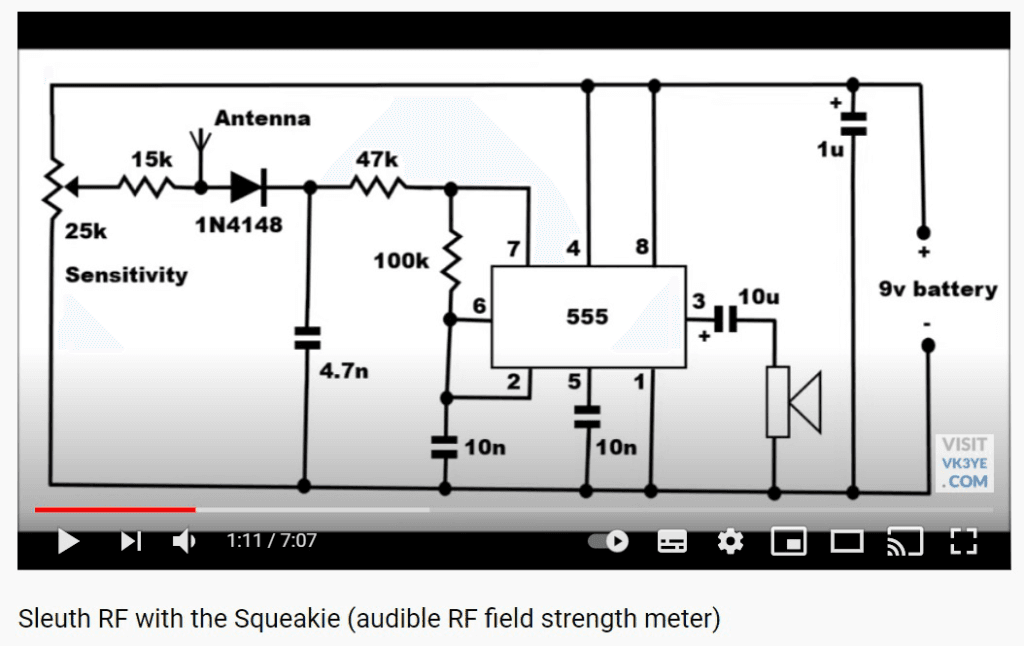Audible rf Sniffer by Alan Drury.
Audible RF Sniffer
Here’s a simple piece of test gear that you can knock up in an evening and yet is surprisingly useful to have around.
The original design is by VK3YE and he calls it “The squeakie”. He has lots of projects on his website and his YouTube channel is also worth a look.
Here’s the circuit:

The 555 timer is configured as a voltage-controlled-oscillator. The control voltage is set by the 25k pot which sits across the supply rails and which is set to the point at which the 555 just stops oscillating. Any RF picked up by the antenna gets rectified by the diode and added on top of this bias voltage which pushes the 555 back into oscillation. The more RF there is, the higher the control voltage gets pushed and the higher the pitch coming from the speaker.
The only thing I added to the circuit above was an on-off switch. I used a miniature toggle switch in series with the battery but if you have a suitable pot with a built-in switch that would do too.


The unit is simple to build and very tolerant in terms of layout etc. A piece of veroboard works just fine and so does ‘dead bug’ construction. A linear pot will give the easiest operation and the speaker can be any small 8 ohm type. A small plastic project box makes a good enclosure and you can mount a telescopic aerial on the top for ease of use. Just mount the pot, speaker, aerial and on-off switch on the box, put the battery and circuit board inside and you’re good to go.
To use, switch on, extend the aerial and with no RF around turn the pot until you hear a note. Now turn the pot back slowly, making the pitch of the note lower and lower until you reach the point where the pitch gets so low that the note stops. This is the point of maximum sensitivity. Now, generate some RF nearby and you’ll hear the note rise, the more RF you’re detecting the higher the pitch will go.
The circuit is unsurprisingly more sensitive at lower frequencies but even at UHF is still quite usable. Mine can detect a Baofeng UV-5R on 144.550 MHz from nearly three metres away and my Allstar node from about a metre.
What can you use it for? Well, detecting and tracking down RF sources obviously, but also confirming your transmitter is working, looking for RF leakage, tuning equipment or aerials for maximum output (the hands-free audible indication is a godsend here) or even as a CW sidetone for a QRP transmitter that doesn’t have one built in. Not bad for something you can knock up in an evening for about the price of a pint.